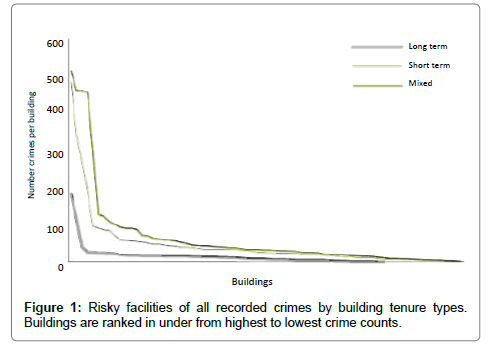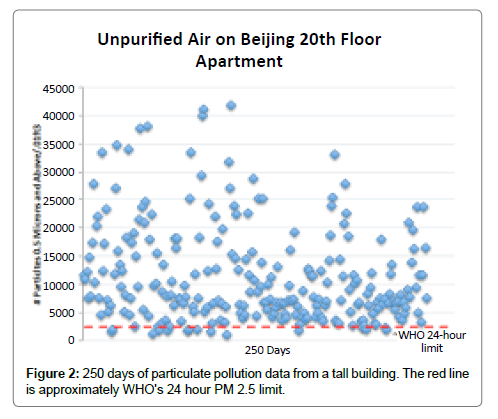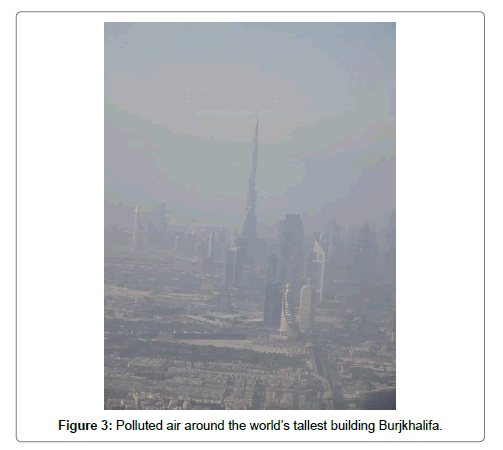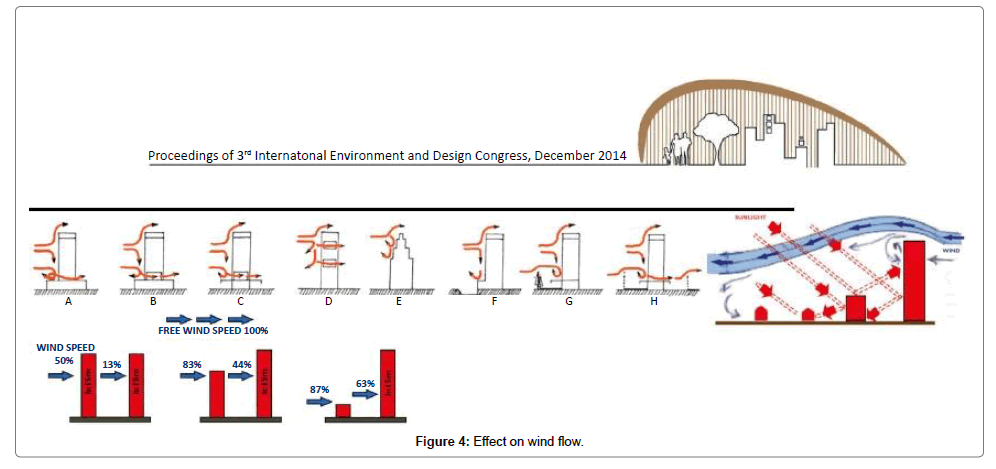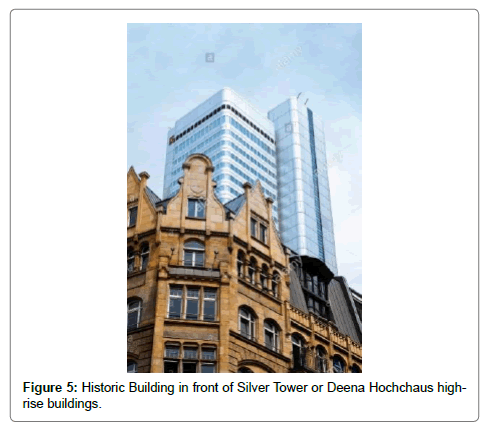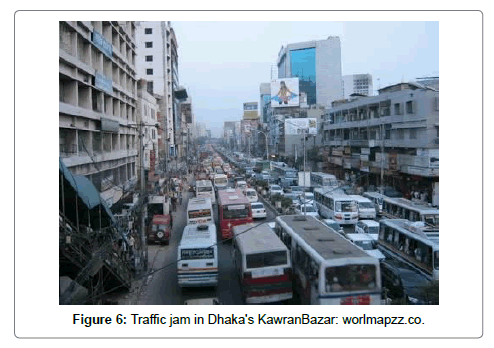Research Article Open Access
Issue Related to Vertical Growth and Development
Sehba Saleem*Faculty of Architecture and Ekistics, Jamia Millia Islamia, New Delhi, India
- *Corresponding Author:
- Sehba Saleem
Assistant Professor
Faculty of Architecture and Ekistics Jamia Millia Islamia
New Delhi, India
Tel: +91-8447378770
E-mail: ar.sehba.saleem@gmail.com
Received Date: December 10, 2016; Accepted Date: December 20, 2016; Published Date: December 26, 2016
Citation: Saleem S (2016) Issue Related to Vertical Growth and Development. J Archit Eng Tech 5: 178. doi: 10.4172/2168-9717.1000178
Copyright: © 2016 Saleem S. This is an open-access article distributed under the terms of the Creative Commons Attribution License, which permits unrestricted use, distribution, and reproduction in any medium, provided the original author and source are credited.
Visit for more related articles at Journal of Architectural Engineering Technology
Abstract
The whirlwind of urbanization which the world witnessed in recent times has swallowed most of the land that was available to humans. In some way or the other, this phenomenon has contributed to consumption of land either as a means or as an end of change. With passage of time, as land started to fall short in comparison to the demands of urbanization, urban planners took the vertical direction, which meant building structures with dazzling heights. In its inception the tall buildings did come across as a reprieve to the perennial problems of horizontal expansion, since it offered more space with least land consumption. Not only did it occupied less space than low rises or horizontal structures, it also offered quite a few services at the same place which intrigued both planners and dwellers alike. But the concept of vertical construction or tall buildings is not without drawbacks. There are issues which are both inherent to them and consequent of them. There are issues like social isolation, environmental pollution, complexity of construction arise due to living in a tall building and also due to the very existence of the same. Not only is the construction of the tall building is problem but if not properly planned or managed, its very existence can become a menace to the urban dwelling. This paper shall attempt to bring to fore the drawbacks of vertical growth in light of threats and challenges it poses to urban dwellers.
Keywords
Environment; Economy; High rise buildings; Growth; Vertical problems
Introduction
In various avenues of urban scenario, a high rise can be very notorious and have unpleasant outcomes. At the individual and familial level, living in a high rise may instigate fears of various kinds in the minds of residents. These fears, though, may at some point or some level be unrealistic but they do exist. One is the fear of their dear ones falling or jumping from the height. This may not essentially be suicide or a criminal activity. But this fear relates more to children and elderly who usually cannot hold their senses in many of their activities and stand a good chance of falling off while engaged in some chores. This other fear rises from the uncertainty of any natural calamity or manmade mishaps like earthquake and fire. The residents of tall buildings fear that in case of any such occurrence their lives would surely be jeopardized as they are far above the ground and by no means can they reach the ground within a short span of time. High Rise buildings can hold thousands of people above the reach of fire safety people and their devices and once the height reaches the level which is beyond the reach of fire department, the chances of saving lives stands negligible in case of fire. Then there is also the fear of falling prey to communicable diseases which are air and touch borne which spreads more easily when many people share hallway, door and elevator buttons. There is a certain communication gap which builds when living in a vertical arrangement which also becomes a source of fear arising from the insecurity that anybody with anti-social intent can be dwelling at the same space and might cause harm to them. All these years contribute to generation of dissatisfaction, behavior problems and reduced helpfulness among individuals residing in tall buildings. The high rise resident showed a higher incidence of depression, schizophrenia and phobia than community residents. (Moore, Hussain and Castor) [1-3].
There is a palpable absence of sense of community amidst dwellers of tall buildings. Numerous studies have been made relating to evaluation of social effects of high rise buildings? Korte observed that high rise residential can cause poor relationships in households and also between dwellings. Evans made a study which demonstrates that this social withdrawal which is found amidst dwellers o high rises stems from the irregular and dissipated interaction within the high rise environment. This feature is almost embedded in the nature of a vertical arrangement of dwelling as there is no interaction or mingling between people sharing the same space. There are only floors in which an individual or family lives and the sense of neighbourhood is completely absent. That feeling of sharing a harmoniously sharing a space and dwelling in a place is completely absent in a high rise building. All this contribute to existence of strained human and social relations. Some sociologist argue that environment of tall buildings can make inhabitants claustrophobic by creating a rat cage mentality. There exists a constant feeling of detachment from the ground and the world that exists there which in many cases deteriorate to the feeling of being isolated. Children tend to be the most affected as their ties with nature and fellow children are most likely to be snapped courtesy the height of their living place. This absence of freedom of running around and engaging in playful activities which that age demands goes a long way in deteriorating their mental and physical health as they have no other options but to remain in the confines of their homes and restrict themselves to indoor entertainment only.
It’s not that social spaces are completely absent in high rises, but it has been generally observed that there is a stark absence of effective social space in the form of lack of semi-private or defensible space; lack of accidental meetings between users; lack of Spatial adaptability of fixed spaces. Chatterjee and Dasgupta reported that high rise living is common design and form which notably lacks open space and play area which were considered adverse for the health of their wards by parents who responded to the study conducted by them. In another study of theirs, they noted that elderly failed to cope up with the stress produced by living in high rise buildings [4,5]. Bordes et al. also highlighted the problem of overcrowding in the higher floors of high rises (Figure 1).
The possibility of crimes and existence of criminals also increase in tall buildings. This is possible because absence of knowledge of the kind of people with whom one is sharing the space. Tall buildings and very tall buildings in many cases offer both residential and basic household retail services in the same arrangement which can encourage miscreants inhabit. Also the height of the structure is big impediment for the police, firefighter and hospital services to reach heights at the time of need or mishap [1].
Environment
On the environmental front, tall buildings have an adverse effect on the microclimate owing to wind funneling and turbulence around their base causing inconvenience to the pedestrians. It has been observed that lower part of tall buildings and the stout buildings standing near high rises are often devoid of sunlight as rays are unable to percolate to the bottom owing to the obstruction posed by the tall standing structures. This forms a very significant drawback of high rise buildings as sunlight is the most important component of human lives and constant absence of it makes the living conditions in the stouter buildings more damp. Tall buildings can cause undesirable intensification of wind flow in urban streets and open spaces. Their existence affects not only wind speed, wind direction and air pollution but also solar radiation. High rises absorb direct and reflected solar radiation and also in an urban outfit where existence of multiple tall structures of various heights are found high rises start to observe reflected solar radiation from roof of other buildings [6].
Tall buildings require abundance of energy for operation and utilities. Heating, ventilation and air conditioning in tall buildings typically account for thirty three per cent or more of the overall tall building consumption according to U.S. Consumption of Energy Data. There has been a characteristic failure in tall buildings to gauge as to how much of the structure will meet the ground and affect the surrounding at the bottom along with the life that exists. The bottom of the tall buildings is generally very wide which is necessary for the construction. But the space that exists at the base or the bottom often fails to promote pedestrian activity which adversely affects environmental life of the city. The bottom space can neither be used for any commercial or residential purpose nor can it be left idle. Hence it is in most cases used as a parking space or a loosely constructed space with no specific objective. It is generally found that the area near the tall building is not feasible for existence of green space in any manner as the space has to be kept available for traffic movement. Hence the absence of green all the most contributes to the pollution of air around tall buildings thereby affecting the overall quality of environment. Not only is the air in the ground more polluted, but as the air rises above it collects particulate matter and becomes more polluted. Hence the air which the residents breathe residing at the upper strata of high rises is as polluted as that which is breathed by those residing at the ground. Some experts maintain that in order to escape the pollution of urban areas, one has to reside at least 3000 metres above the ground. This observation becomes fearful when seen in the light of the fact that the current tallest building of the world is only 849 metres tall (BurjKhalifa, Dubai) and its successor shall be only 1000 metres tall (Kingdom Tower Jeddah). Thus, can height be a means of defiance of urban air pollution is an issue which remains challenged (Figures 2 and 3) [7].
Impact on historicity
Most cities in which high rises have come up are blessed with a history of their own and historical structures which are reminiscent of times gone by. They are located within the city in the urban core. Induction of tall buildings in the same space often has resulted in maligning the grandeur and the sanctity of the place. This happens because the high rises needs a certain amount of ground clearance which when located near a historical site invades the site and degenerates it quality of existence. In cities like Athens, Jerusalem, Damascus, London where history and historical place has a strong presence, the impact of high rise buildings has been very critical whose existence has resulted in damaging of heritage sites (Figures 4 and 5).
Economics
The cost of construction of high rises is spiked up since it involves usage of different and more sophisticated level of expertise and equipment. The complicated mechanism involved in construction includes structural systems to carry high wind loads and high tech mechanical electrical elevators and fire resistant systems. The higher cost is also induced because floors located at greater heights needs to be protected from and made strong enough to withstand natural forces of gravity, high winds and earthquakes. At great heights serviceability and motion control demands greater stiffness of the structural system along with the maintenance of the slenderness which goes a long way in increasing the cost of construction of skyscrapers. The operational cost of high rises also involves high energy consuming elevators, maintenance of emergency response preparedness etc. which inflates the cost of construction.
For developing economies such incurring such expenditure may exert heavy burden on the economy when seen from the perspective of the number of people such structures can accommodate in ratio with cost of running maintenance and maintenance of tall structures. It may also be considered that wealth in developing economies is not equally distributed and construction of such isolated gigantic structures may make the social divide of rich and poor more acute [8].
Alongside the above categorized issues and impacts related to high rises and vertical growth, a high rise may also alter the urban fabric at strategic and local levels. Since the high rise is host to a considerable population of different nature, it tends to exert a great deal of stress on city's infrastructure like public transport and other utilities especially during peak hours of the day because the traffic inflow both in and out of high rises is huge and it, in most cases, results in causing traffic logging. There is much more vehicular clutter around high rises than near community living. This causes serious damage to both environment and human alike in the form of increasing air pollution for the former and prolonging journey time for the latter (Figure 6) [9].
Conclusion
In the time we exist safety and well-being of humanity is the utmost concern of every administrative authority at every level of its existence. The issues of individual and community health, historicity of metropolitan, safety and upkeep of the urban environment are issues which cannot be ignored or taken for granted. Addressing these issues get more complicated given the fact that the human population is on the rise constantly and it has to be accommodated in a given space of land. The vertical growth is a probable remedy for these issues, we cannot neglect its inherent drawbacks and implications on human society and environment and consider it the sole cure of every urban problem.
References
- Gifford R (2007)The consequences of living in high-rise buildings. Architectural science review 50: 2-17.
- Ali MM, Al-Kodmany K (2012) Tall Buildings and Urban Habitat of the 21st Century A Global Perspective. Buildings 2: 384-423.
- Hayati H, Sayadi MH (2012) Impact of tall buildings in environmental pollution. Environmental Skeptics and Critics 1: 8.
- Alderbersky AA (2012) The Influence of High Rise Buildings on Environment.
- Arslan B (2014) Significant Issues in and around High Rise Environment.
- Ibrahim E (2007) High-Rise Building-Needs & Impacts. In Cib World Building Congress.
- Chatterjee M (2009) Perception of housing environment among high rise dwellers. Journal of the Indian Academy of Applied Psychology 35: 85-92.
- Pourmusavi M, Zanganeh SS, AhmadifardN, Abdi N (2011) The Effect of High Rise Buildings on Urban Crimes Case Study 22 Zones of Tehran.
- Niu J (2004) Some significant environmental issues in high-rise residential building design in urban area. Energy and buildings 36: 1259-1263.
Relevant Topics
- Architect
- Architectural Drawing
- Architectural Engineering
- Building design
- Building Information Modeling (BIM)
- Concrete
- Construction
- Construction Engineering
- Construction Estimating Software
- Engineering Drawing
- Fabric Formwork
- Interior Design
- Interior Designing
- Landscape Architecture
- Smart Buildings
- Sociology of Architecture
- Structural Analysis
- Sustainable Design
- Urban Design
- Urban Planner
Recommended Journals
Article Tools
Article Usage
- Total views: 6899
- [From(publication date):
December-2016 - Aug 29, 2025] - Breakdown by view type
- HTML page views : 5815
- PDF downloads : 1084

